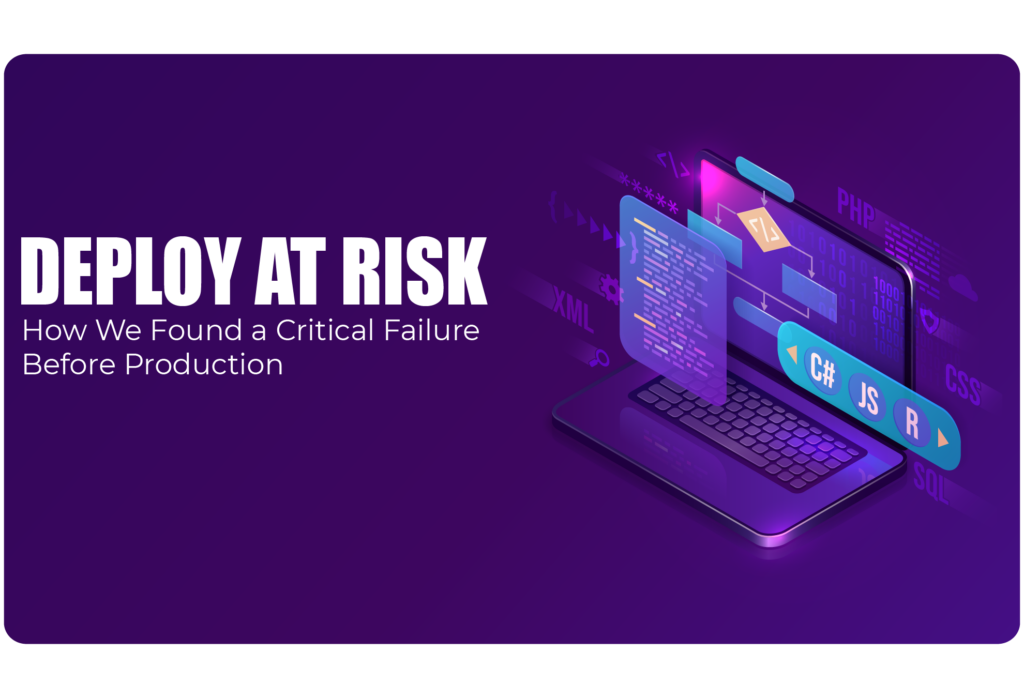

Every Deployment Carries an Invisible Risk
Your team has already run all the tests, passed QA, completed staging approval, and even so… something critical slips through. The deployment happens, and minutes later: alerts, rollback, and panic. For complex environments with high load and data dependency, this isn’t the exception — it’s routine. But it doesn’t have to be.
In this article, we present a real case where we found a critical failure before production release, avoiding financial and reputational impacts. You’ll learn how observability acted predictively, the step-by-step of the investigation, and how dbsnOOp Flightdeck was decisive in reversing the scenario before the deploy became a problem.
The Scenario: Multiple Environments, Growing Load, Tight Deadline
The application in question was a financial management SaaS platform running on PostgreSQL, with APIs in Node.js, queues in RabbitMQ, and deployed in Kubernetes. The team needed to release a new real-time data consolidation feature for 4,000 simultaneous users.
The deployment was scheduled for Friday, with increased load expected by Saturday. Staging approval was complete. Everything indicated the code was ready.
What Prevented the Disaster
In the final checklist, we decided to run a database behavior analysis in the staging environment with the new feature enabled. This analysis was performed using Flightdeck, already integrated into the team’s DevOps routine.
In less than 3 minutes, we detected:
- A query that triggered a full scan on a table with 87 million records
- Use of poorly optimized CTEs combined with PL/pgSQL functions with high CPU cost
- Accumulation of locks in parallel with concurrent requests, simulating a real-world usage scenario
These issues didn’t show up in unit or automated tests because they only manifested with real data and simultaneous concurrency.

The Step-by-Step Discovery
- Enabled the new functionality in the staging environment with simulated load
- Flightdeck detected CPU usage spikes and latency in 4 specific queries
- We correlated those queries with the affected endpoints
- Identified that the execution plan changed drastically with 10× more data
- Refactored the query structure and added two missing indexes
- Re-ran the tests and confirmed stability
Without real-time visibility and contextual analysis, this bottleneck would have gone unnoticed during deployment.
How This Connects to Your Reality
Even if your environment doesn’t yet have thousands of simultaneous users, the failure pattern is the same:
- Tests that don’t simulate real-world load
- Code that works, but doesn’t scale
- Problems that only appear with real data and concurrent use
Without observability, deployment is always a game of Russian roulette. With tools like dbsnOOp Flightdeck, your team gains eyes inside the database — and enough time to act.
Moreover, the gain in operational maturity after an avoided failure is tangible. The team starts incorporating predictive monitoring practices and continuous, evidence-based review. This shifts the team’s culture — from reaction to anticipation.
In environments where each second of downtime represents financial loss or SLA breach, anticipating failures becomes a competitive edge. And we’re not talking about large teams or million-dollar budgets, but about teams with a mindset focused on visibility and efficiency.

The Right Tools, Better Decisions
Teams that adopt solutions focused on full visibility not only avoid failures but also optimize their decision-making processes. Using tools like dbsnOOp Flightdeck makes it easier to compare environments, prioritize bottlenecks, and create truly relevant alerts. The result is a lighter, safer operation with faster business response.
Benefits Observed After Preventive Correction
- Zero production downtime
- 65% reduction in latency of the affected endpoints
- Overall performance gain even in unrelated functionalities
- Internal recognition from the data team for the “smoothest deploy of the quarter”
Prevention Is Still the Best Rollback
Cases like this show that prevention is not a luxury — it’s an efficiency lever. Catching a critical failure before deployment means avoiding:
- Financial loss
- SLA compromise
- Erosion of internal and customer trust
By embedding observability into the deployment lifecycle, you transform how your team prepares to grow safely. The answer doesn’t lie solely in testing or infrastructure, but in the ability to see what no one else sees — before it’s too late.
dbsnOOp Flightdeck delivers exactly that: continuous visibility, contextual analysis, automation, and ready-to-action insights.
Want to Solve This Challenge Smartly?
Book a meeting with our specialist or watch a live demo in practice!
Schedule a demo here.
Visit our YouTube channel to learn about the platform and watch tutorials.
Learn more about Flightdeck!
Learn about database monitoring with advanced tools here.


